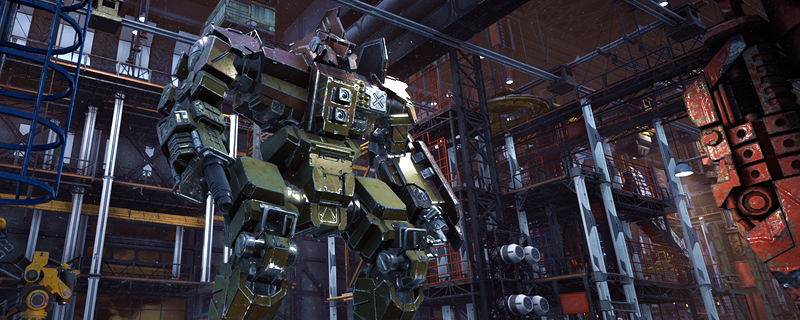Did Nvidia fix DLSS? DLSS 2.0 Analysis with MechWarrior 5: Mercenaries
Introduction – What is DLSS?Â
Nvidia’s Deep Learning Super Sampling (DLSS) technology is a bold attempt to utilise AI hardware to make PC games run faster and potentially look better. Outside of raytracing, DLSS was set to be one of Nvidia’s killer RTX series features, using the power of Nvidia’s Tensor cores to increase the performance of supported PC releases.Â
In basic terms, DLSS uses the powers of AI and Machine Learning to create higher resolution versions of rendered images, creating high-resolution images from lower resolution renders through Nvidia’s DLSS algorithm. Nvidia’s DLSS algorithm promised to increase game performance without any notable reductions in graphical quality, giving gamers more performance headroom for raytracing and other advanced graphical effects.Â
Sadly, early implementations of DLSS failed to live up to Nvidia’s claims, creating a lot of ill will towards the company, RTX series graphics cards and AI-enhanced gaming as a whole. But thankfully, that wasn’t the end of DLSS.Â
Nvidia has taken its lumps and has developed DLSS 2.0, a “new and improved deep learning neural network” that promises to give gamers higher levels of image quality and enhanced game performance. Better still, DLSS 2.0 is said to be easier to integrate into games, which is great news for users of RTX series graphics cards. Â
Now before we move onto DLSS 2.0, we need to look at where it all started, and where the controversy surrounding Nvidia’s DLSS technology began.Â
Early DLSS – Extra Performance & Extra Blur
Our first encounter with DLSS was in Metro Exodus, which released last year as one of Nvidia’s first RTX titles. Alongside Raytraced Global Illumination, DLSS was one of Nvidia’s highlight features within Metro Exodus, promising to help gamers reach higher framerates when the game’s raytraced global illumination was enabled.Â
Below is an image comparison from our day-1 PC Performance Analysis of Metro Exodus, highlighting what would later become known as “DLSS Blur” by much of the PC gaming community. While the game’s DLSS implementation was later improved with game updates (more information here), the visual downsides of DLSS remained. In short, DLSS wasn’t the free performance upgrade that Nvidia originally marketed, the performance benefits of DLSS came with graphical downsides.Â
In many games, the graphical/performance trade-off of DLSS was worth it, but for many others, the feature only generated disappointment for early RTX adopters. Nvidia needed to improve its DLSS technology to deliver what they originally promised, and that’s where DLSS 2.0 comes in. Â
DLSS 2.0 – The Next Generation of DLSSÂ
With DLSS 2.0, Nvidia promises to deliver sharper, more detailed images and more choice than ever before. For starters, all future DLSS games will feature several DLSS quality settings, Performance, Balanced and Quality, each of which is designed to deliver compelling visuals.Â
Another change is that Nvidia’s DLSS algorithm is now game-wide, not game-specific. This change will allow Nvidia to improve its algorithm to deliver further quality enhancements moving forward. This means that all DLSS 2.0 games can benefit from Nvidia’s continued improvements in their DLSS algorithm, which means that DLSS’ performance and quality should get better over time.Â
Nvidia’s DLSS algorithm has also been modified to remove many of the unintended artefacts which were present in earlier DLSS implementations. This change will make the change to DLSS less noticeable, and make DLSS a lot more seamless than before.Â
How is this possible? One of the key factors of DLSS 2.0 is Nvidia’s improved hardware efficiency. Nvidia can now get 2x more performance from its Tensor cores than before, allowing DLSS to work much harder than before. This change will help DLSS deliver higher framerates, and has allowed Nvidia to achieve better visuals by using more complex algorithms.Â
Please head over to the next page to see DLSS 2.0 in action within MechWarrior 5: Mercenaries.Â



